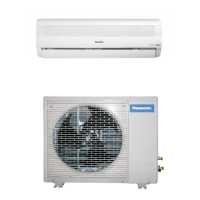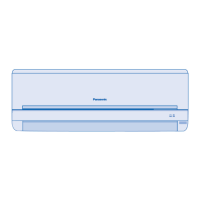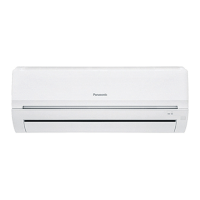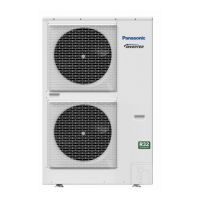35
Step 2: Refrigerant leak detection through Electronic halogen leak detector and/or ultrasonic leak detector:
1. Use any one of below detector to check leaking.
o Electronic halogen leak detector.
Switch on the unit.
Cover the test area from direct draft.
Pass the detection probe near test area and wait for audible and visible signals.
o Ultrasonic Leak Detector
Make sure the area is quiet.
Switch on the ultrasonic leak detector.
Move the probe along your air conditioning system to test for leaks, and mark for repair.
2. Any leak detected at this level shall be repaired and retested, starting from “Step 1: Pressure test”.
NOTE:
Always recover the refrigerant and Nitrogen gas into recovery cylinder after completion of a test.
You must use the detection equipment with Detectable Leak Rate of 10
-6
Pa.m
3
/s or better.
Do not use refrigerant as test medium for system with total refrigerant charge more than 5kg.
Test shall be performed with dry Nitrogen or another non-flammable, non-reactive, dried gas. Oxygen, air or
mixtures containing them shall not be used.
Step 3: Evacuation of the equipment:
Do not purge the air with refrigerants but use a vacuum pump to vacuum the installation.
There is no extra refrigerant in the outdoor unit for air purging.
1. Connect a charging hose with a push pin to
the Low and High side of a charging set and
the service port of the 3-way valve.
o Be sure to connect the end of the
charging hose with the push pin to the
service port.
2. Connect the center hose of the charging set to
a vacuum pump with check valve, or vacuum
pump adaptor.
3. Turn on the power switch of the vacuum pump
and make sure that the needle in the gauge
moves from 0 cmHg (0 MPa) to -76 cmHg
(-0.1 MPa). Then evacuate the air
approximately 10 minutes.
4. Close the Low and High side valves of the
charging set and turn off the vacuum pump.
Make sure that the needle in the gauge does
not move after approximately 5 minutes.
Note: BE SURE TO FOLLOW THIS
PROCEDURE IN ORDER TO AVOID
REFRIGERANT GAS LEAKAGE.
5. Disconnect the charging hose from the
vacuum pump and from the service port of the
3-way valves.
6. Tighten the service port caps of the 3-way
valve at a torque of 18 N•m with a torque
wrench.
7. Remove the valve caps of the both 3-way
valves. Position both of the valves to “OPEN”
using a hexagonal wrench (4 mm).
8. Mount valve caps onto the both 3-way valves.
o Be sure to check for gas leakage.
CAUTION
If gauge needle does not move from 0 cmHg (0 MPa) to -76 cmHg (-0.1 MPa), in step above take the following measure:
- If the leak stops when the piping connections are tightened further, continue working from step .
- If the leak does not stop when the connections are retightened, repair location of leak.
- Do not release refrigerant during piping work for installation and reinstallation.
- Take care of the liquid refrigerant, it may cause frostbite.
Indoor Unit
Outdoor Unit
3-way valve
3-way valve
Close
Close
3-way valve
3-way valve
Indoor Unit
Vacuum
pump
Vacuum pump
adaptor
Gas side
Gas side
Liquid side
Liquid side
OPEN
OPEN
Close
Close
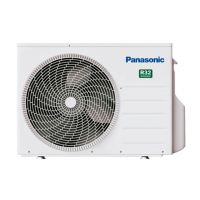
